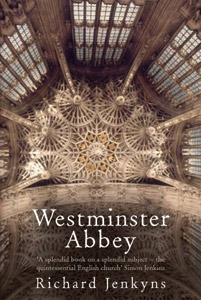
One of the delights of being unable to pass by a bookshop(especially if it is secondhand where bargins are to be had) is the sheer delight of discovery. This latest purchase added to the holiday reading written so beautifully by the professor of the Classical Tradition in The University of Oxford.
Part of the reason for purchase was the reality that at the moment I am getting used to a new building ( St Georges Chapel Windsor) so I wondered how soemone went about capturing aplace and building and history of what is described as ‘ the most complex church in the world’ (page 1)
In ten Chapters Jenkyns gives us a remarkable overview of the place and its work.Westminster Abbey is National cathedral, coronation church, royal mausoleum, burial place of poets, resting place of the great and of the Unknown Warrior, former home of parliament, backdrop to the funeral of Diana, Princess of Wales–this rich and extraordinary building unites many functions.
There is, of course, a close affinity between the Abbey and St Georges Windsor. Both are Royal Peculiars where the Dean and Canons are answerable only to the Soveriegn. Both share aspects of the same architecture
Westminster Abbeyis both an appreciation of an architectural masterpiece and an exploration of the building’s shifting meanings. We hear the voices of those who have described its forms, moods, and ceremonies, from Shakespeare and Voltaire to Dickens and Henry James; we see how rulers have made use of it, from medieval kings to modern prime ministers.
In a highly original book, classicist and cultural historian Richard Jenkyns teaches us to look at this microcosm of history with new eyes.
I recomend that you use your eyes to discover this book!
